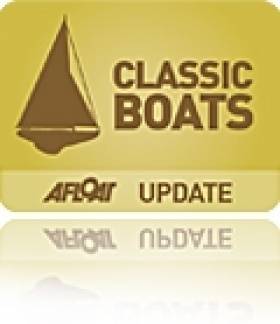Displaying items by tag: Battle of Jutland warship survivor
Belfast-Based Battleship from WWI to be Restored Into Museum
#HMScaroline – The National Museum of the Royal Navy (NMRN) has been boosted by a £1m lottery funding to turn Belfast-based HMS Caroline into a visitor attraction in time for the 1916 Battle of Jutland centenary celebrations off the coast of Denmark.
The derelict vessel, which is currently docked in the same Belfast shipyards where the Titanic was built, was in danger of rusting away or even being scrapped before moves to restore it started to build up steam two years ago.
The Heritage Lottery Fund has now awarded £11.5 million to fund the work ahead of 2016. For further coverage of this development, The Belfast Telegraph has a report HERE.
Repairs Start on Belfast's Warship Caroline
#WWICruiser –Repairs to vital weatherproofing have started on HMS Caroline in advance of major restorative work to turn the famous World War One fighting ship as previously reported into a floating museum in Belfast.
It came dangerously close to sinking during the big freeze of 2010 when pipes and radiators burst, but work is well under way to protect it from the ravages of another potential harsh winter.
Deck timbers are being replaced to prevent the risk of more flooding and a major internal inspection of space below the water line is being carried out. For more The Belfast Telegraph reports.
Belfast Harbour Boat Tours and WWI Warship Gem
#BELFAST HARBOUR TOURS- If there was ever a time to take a tour of Belfast Harbour, it is now on board the Lagan Boat Company, particularly in light of on-going developments as previously reported to keep the WWI veteran cruiser HMS Caroline in the city, writes Jehan Ashmore.
The 98-year old ship which is the last survivor of the famous Battle of Jutland in 1916, is facing another battle from threat of scrapping or a new life albeit towed to Portsmouth's Historic Dockyard for preservation. Yet there is a campaign to keep the historic ship in the city as tourist attraction.
A great opportunity is provided on board the excursion as the very informative guided-boat tour gives unrivalled access to HMS Caroline moored in Alexandra Dock.
While en-route, the excursion boat which departs from Donegall Quay (several minutes-walk from City Hall), passes the new Titanic Belfast visitor attraction and the world famous symbolic Samson and Goliath cranes at Harland & Wolff.
As the boat enters Alexandra Dock, passengers get very much up close and personal views of HMS Caroline, as the riveted hull complete with portholes looms above. As of a result, one immediately senses a different era in shipbuilding techniques with her cruiser stern and highly flared bow. In addition her distinctive profile of three funnels resembling liners also of old and a tripod foremast.
Since she first came to Belfast in 1924, HMS Caroline has performed various roles. She acted as a floating administrative base during WWII. She then became headquarters and training ship for the Royal Naval Volunteer Reserve in Northern Ireland.
Her career came to an end after 97 years with the Royal Navy, when formally decommissioned by the MoD when reserves transferred to HMS Hibernia (not a ship) in Thiepval Barracks in Lisburn during March 2011. For more about the campaign and proposals to save the ship in her homeport, click HERE


























































